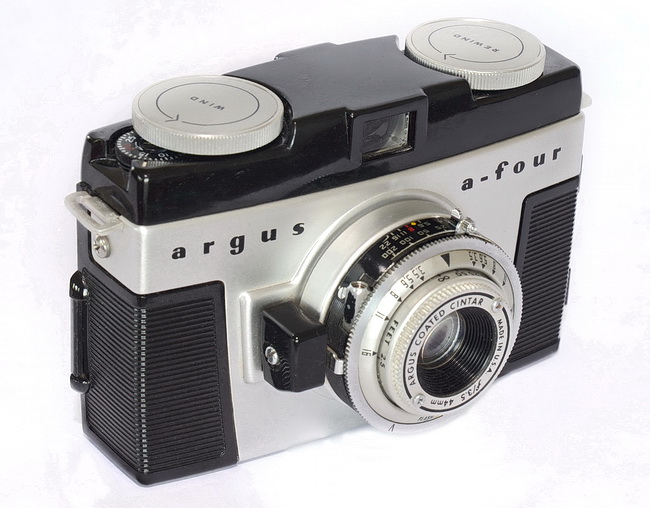 This is my first Argus camera. Why? Because if there’s one thing that characterizes most Argus cameras I’ve seen, it’s this: they’re ugly. Really ugly. Mind you, if the box-with-stuck-on-dials-and-knobs aesthetic appeals to you, then you’ve found your camera maker. Which is why the a-four is such a novelty. It’s actually a very stylish camera.
This is my first Argus camera. Why? Because if there’s one thing that characterizes most Argus cameras I’ve seen, it’s this: they’re ugly. Really ugly. Mind you, if the box-with-stuck-on-dials-and-knobs aesthetic appeals to you, then you’ve found your camera maker. Which is why the a-four is such a novelty. It’s actually a very stylish camera.
Yes, I know there are several Argus cameras that have devoted followings, with the C3 perhaps being the best known. And maybe that’s why I always associate Argus cameras with ugliness — the C3 is the model that is most common. To be fair, quite a few of the others (especially the A-series) have a kitschy appeal. But there’s something about the a-four that’s different. The aesthetic is almost industrial and looks like a product from Functionalist school of industrial design, or perhaps something Dieter Rams might have dreamed up while working for Braun. And yet, there’s also a vaguely Art Deco aspect to the sweep of its lines. It’s a cool camera. And it turns out, it works reasonably well.
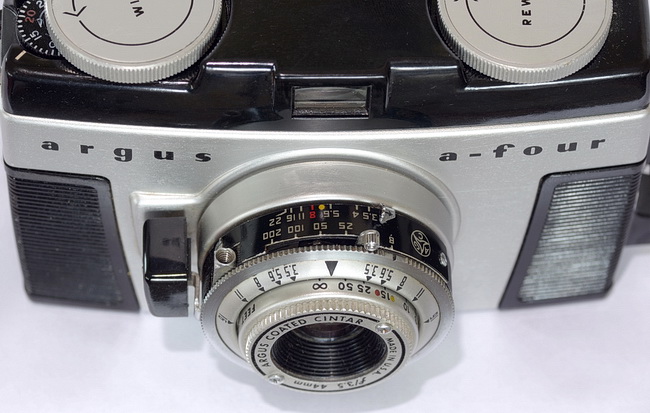
A pair of stylish, large knobs dominate the a-four's top deck. The shutter release is the block to the left of the lens.
The a-four was apparently made from 1953 to 1956, and if I read the date code on mine correctly, this particular sample left the factory in 1954. The camera has only basic functions. The shutter speeds are bulb, 1/25, 1/50, 1/100, and 1/200. The f-stops range from f/3.5 (fully open), all the way down to f/22. The lens is a 44mm coated “Cintar” that scale focuses from 2.5 feet to infinity. It has a cable release socket on its Gauthier leaf shutter mechanism, and you have to cock the shutter for every shot, which is something many cameras from this era require. Basic though it is, the camera has all the controls one requires for good photos.
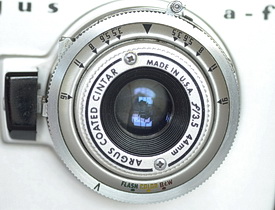
The a-four's lens is a 44mm f/3.5 Cintar.The camera's back comes completely off for film loading.The a-four's viewfinder is positioned in the centre. The tab to its right is for releasing the film for rewinding.
The lightweight camera body is made from durable Bakelite and has an aluminum face-plate, knobs, and accents. One of the camera’s more unusual features is the removable, clip-on back. This actually works very well and I saw no evidence of light leaks in any of my photos. And for once, I didn’t have to clean out a gooey mess from deteriorated foam light seals. The frame counter is also one of the count-down variety and you have to remember to re-set it when you load in your film.
So what’s the downside? There are two. First, the Cintar lens is really sharp only at the centre. It’s serviceable, but its not going to produce the most detailed images ever. Even stopped down to f/8, the corners of the photos are noticeably soft. Second, the shot-to-shot time is pretty long. Winding to the next frame takes a full turn of the film-advance dial, you have to set the guestimation focus, aperture, and shutter speed (based on a light-meter reading, or Sunny 16), cock the shutter (something I regularly forget to do), aim, then fire. It’s not a camera for quick street shooting.
All that said, I use the Argus a-four from time to time. Why? Because it’s fun! And let’s face it — most of us tend to take better pictures when we’re having fun. The a-four is also not a camera that will intimidate anyone, indeed, it serves as a conversation starter. And I’ll use it now and then because sharpness isn’t always the most important thing.
Did you find this article interesting or helpful? If so, consider using this link the next time you shop at Amazon.com. Better yet, bookmark it for future use. Thanks to Amazon’s associates program, doing so costs you nothing yet helps keep this site up and running. Thanks!
For more of my camera reviews, click here.

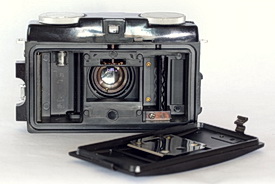
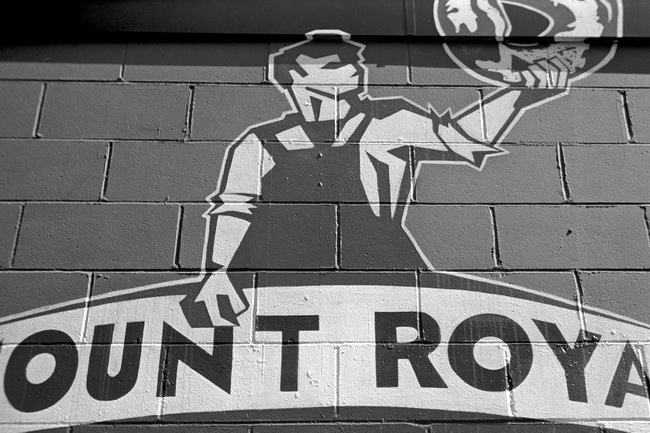

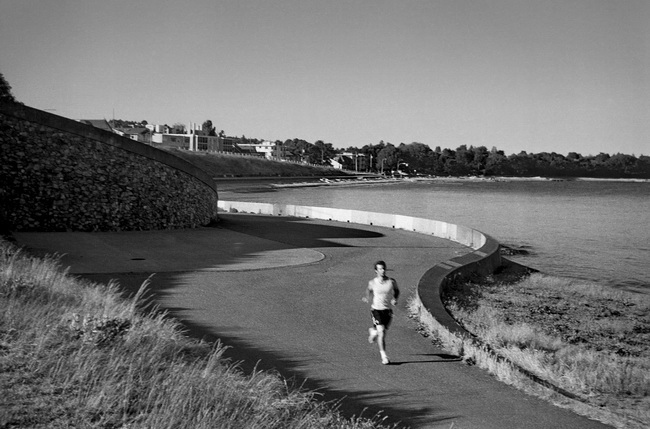
 Subscribe with RSS
Subscribe with RSS

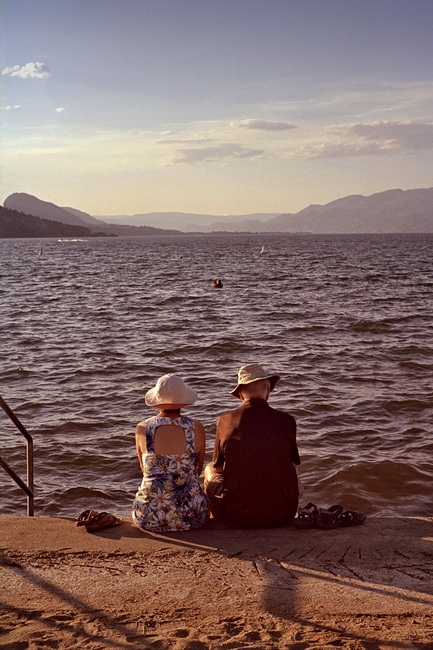
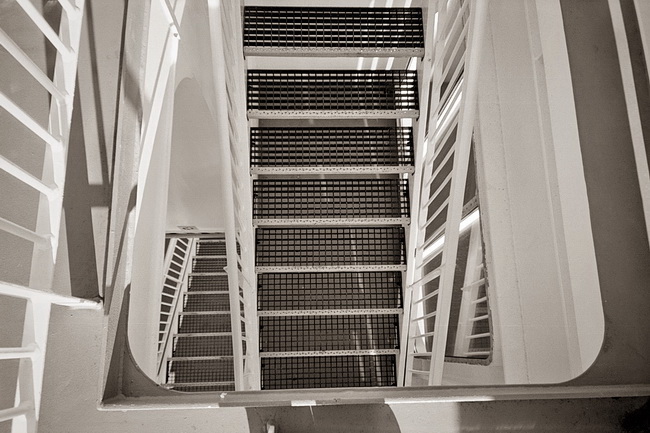
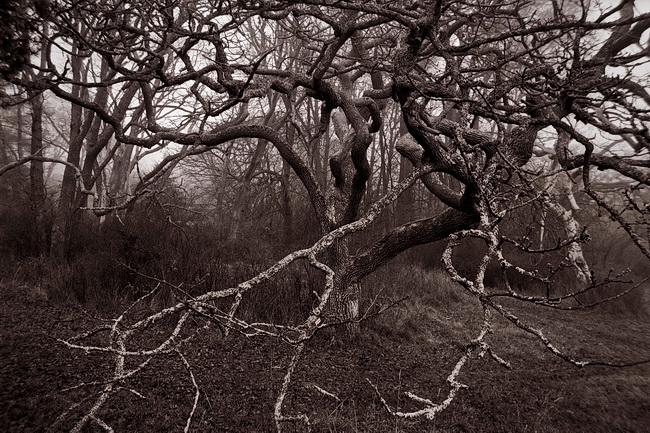

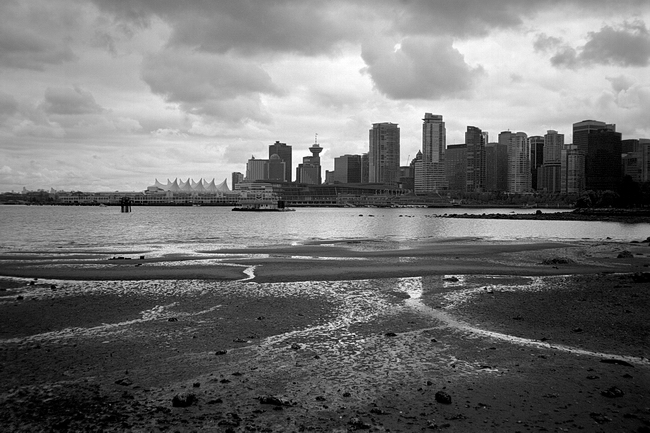
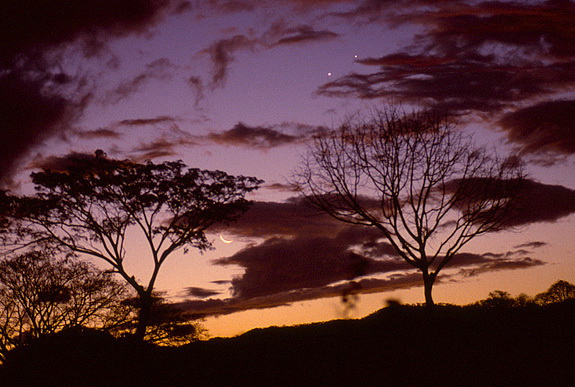

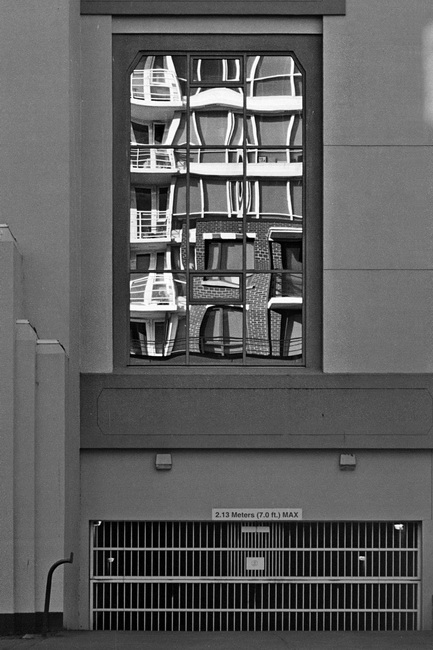
Interesting. It pre-dates my 1957 Argus C3, but it looks years ahead of it!
Nice looking camera. Cameras like this, with the conversation starter aspect, might be excellent street cameras for those situations where you feel it necessary to ask someone to take a picture.
Nice to see your shots with it – these are all locations I have photographed in the past two months or so. We might have been there at that the same time!
Just found one in a thrift store! Got Fujicolor 200 film for it – would you say that would work well? I plan to shoot only outdoors, full sunlight. Thanks for this informative post!
You should be fine with 200 speed film, but you’ll be stopping down to f/16 and running at the fastest shutter speed in bright daylight, so I wouldn’t use anything faster, unless you anticipate lots of low-light shooting.
Have fun!
Gary